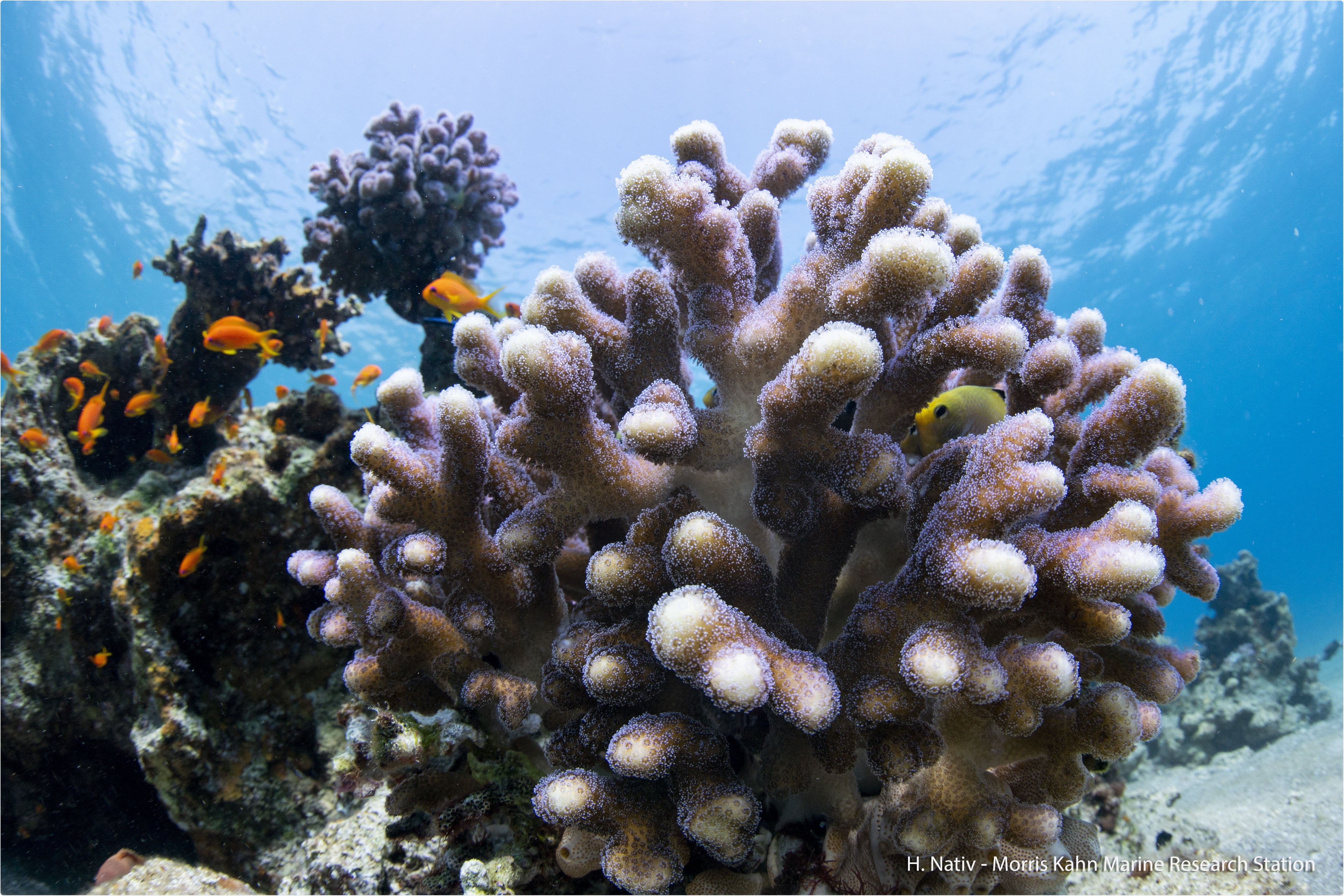A team of researchers from the University of Haifa, the Weizmann Institute, and the Centre for Genomic Regulation (CRG) has created the world’s first atlas of all the different types of cells in Stylophora pistillata—a reef-building stony coral that inhabits the Indo-Pacific oceans.

Stony corals pictured in their natural habitat in the Gulf of Eilat, at the northern tip of the Red Sea. Image Credit: Hagai Native/University of Haifa.
The study, recently published in the Cell journal, is the first to identify the existence of specialized immune cells in corals.
The results shed new light on the evolution and molecular biology of corals and will help both future and present conservation efforts to safeguard coral reef ecosystems that are vulnerable to rising ocean acidification and temperatures.
The cell atlas revealed that Stylophora pistillata has 40 different types of cells across the three main stages in its life cycle. The team also discovered molecular mechanisms that are responsible for crucial biological processes, like the formation of skeletons in corals. This skeleton acts as the habitat for a huge number of marine animals.
The researchers also revealed how corals establish a symbiotic association with the photosynthetic algae that live inside their cells. Besides this, the team unexpectedly discovered the existence of specialized immune cells that use several genes. These genes are generally related to the function of immune cells in vertebrates.
Previously, it has been assumed that innate immunity plays a crucial role in maintaining the health of algae symbionts and also their resilience to growing acidification and temperatures; however, no specialized immune cells have been reported in the coral species, until now.
Coral reefs play a critical role in the ecosystem of oceans and seas, since they provide a habitat for around 25% of animals in the sea and build the largest biogenic structures in the world. The warming of the seawater and rising acidity pose a threat to the future of coral reefs, and accordingly, the genetic sequencing we have completed is extremely important for the survival of coral reefs and the future of the oceans.”
Dr Tali Mass, Study Co-Author and Researcher, University of Haifa
Arnau Sebe Pedrós, the study co-author and Group Leader at the CRG stated, “Our work systematically defines the molecular biology of coral cells. This cell atlas will help to better understand the responses of corals to rising temperatures and ocean acidification, and may even eventually help design interventions that boost the resilience of the coral reefs we still have left.”
This work is also a good example of how single-cell genomics technologies are revolutionizing our understanding of animal biodiversity and evolution, bridging the gap between genomes and organisms.”
Arnau Sebe Pedrós, Study Co-Author and Group Leader, Centre for Genomic Regulation
The investigators created the cell map by using a technique known as single-cell RNA sequencing to quantify the gene expression of all individual cells. In this study, single-cell RNA sequencing is nearly exclusively restricted to species that can be grown in laboratory settings.
Since it is difficult to grow stony corals in laboratory settings, scientists from Israel obtained the corals at varying stages in their life cycle in the Gulf of Eilat, later shifted them to the Weizmann Institute, and finally to the CRG in Barcelona for analysis and sequencing. This analysis is one of the few to perform single-cell analysis in species obtained from the wild.
Stony corals represent the foundation species for several coral reefs. They start their lifespan as swimming larvae that distribute and settle down as polyps. These polyps quickly build a protein-rich matrix that creates a calcium carbonate skeleton and ultimately develops into a colonial adult made up of several individual polys.
Stony coral colonies form the main habitat for a large diversity of marine species, and this is the reason why coral reefs are regarded as the rainforests of the sea.
Stony corals survive in tropical seas by establishing a symbiotic association with photosynthetic algae that reside inside their cells. The algae supply photosynthetic products to the cell, which consequently supplies carbon to these algae.
The symbiotic association preserves the high energy demands of the growth and reproduction of corals, including their skeleton formation.
In the last few years, coral reefs have reduced considerably across the world. The key drivers of this decline are growing ocean acidification and temperatures, which have a direct effect on coral symbiosis by resulting in coral bleaching. During bleaching, corals expel the algae that live inside their tissues and the formation of skeletons is also affected through decreased rates of calcification.
Source:
Journal reference:
Levy, S., et al. (2021) A stony coral cell atlas illuminates the molecular and cellular basis of coral symbiosis, calcification, and immunity. Cell. doi.org/10.1016/j.cell.2021.04.005.